https://www.youtube.com/watch?v=9HcJmViShp4
How To Solve A 5X5 Rubiks Cube - Beginners Edge Pairing
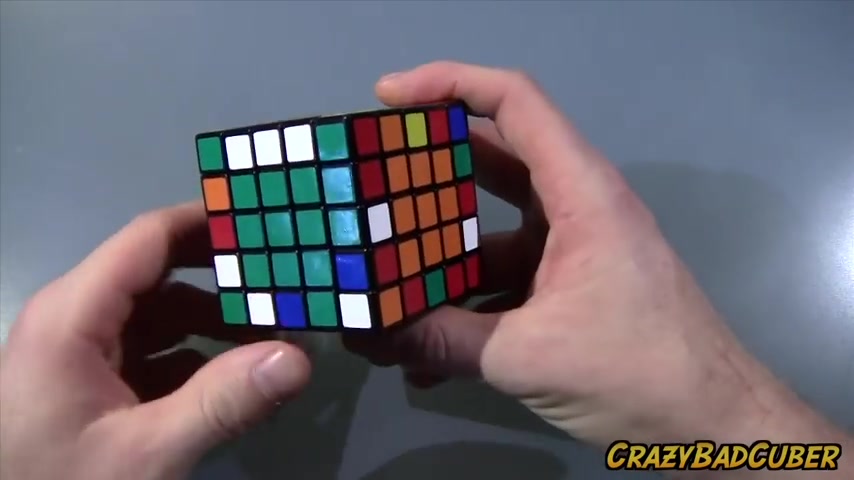
You've clicked on beginner's edge pairing in this tutorial .
We're gonna learn how to pair up edges on the five by five cube .
As you can see in front of me , I've already got two that are paired up .
Now , I want you to understand how many pieces are in an edge .
Here is a center edge piece .
Then there's the one next to it on the right and there's also the one next to it on the left .
So there are three pieces that can make a full edge for the beginning .
We're just gonna learn how to put one piece next to a centerpiece and we're gonna do that on all of the edges and then we're gonna concentrate on putting in the third piece on all of the edges as well .
So as you can see here , I've got a green and a white center edge piece .
I need to put one piece here or I can put one piece here .
So let's take a look around the cube for another green and white edge piece .
Here's a green and white edge piece here .
Let's take a look where the other one is .
Here's the other one here .
So this is good because I'm going to show you how to place these in .
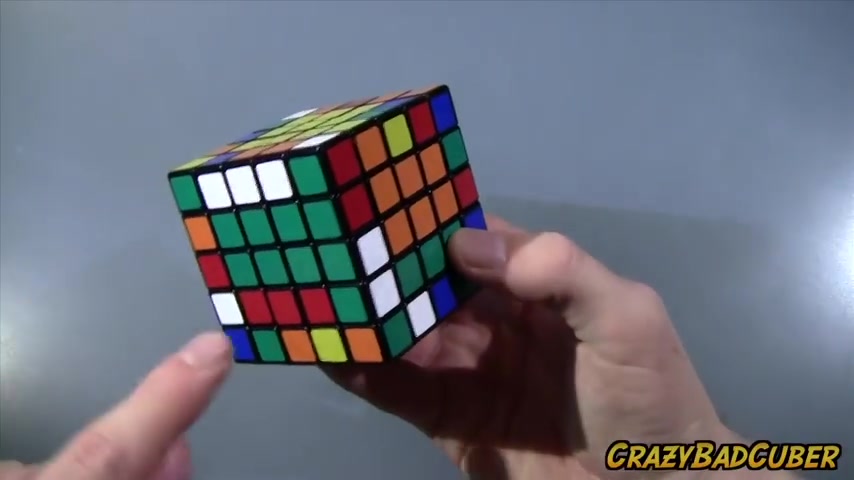
We're gonna do something called slicing , which is slicing through the center layers um of the center pieces .
So we're gonna match this piece up with this piece so we can slice it over as you can see it does match .
But keep in mind that there was another piece too , right ?
So there's another green and white that has to come here and as we saw it was over there .
So this one comes in that matches up .
Now , you might think that because this one is here , we can match it up as well .
But we can't , if we were to slice this side over , you'll see that it comes in backwards .
So you have to really be cautious of which way you put it in .
And so here's an easy way to know whenever you're placing um an edge piece and pairing it up with a center edge piece .
You do need it to be a cross from it in either in the up or the down position .
So this , you know that this one is correct , we can put this one correctly with this one .
But as I just demonstrated , we cannot with this one .
So let's look at the differences between these pieces on this one .
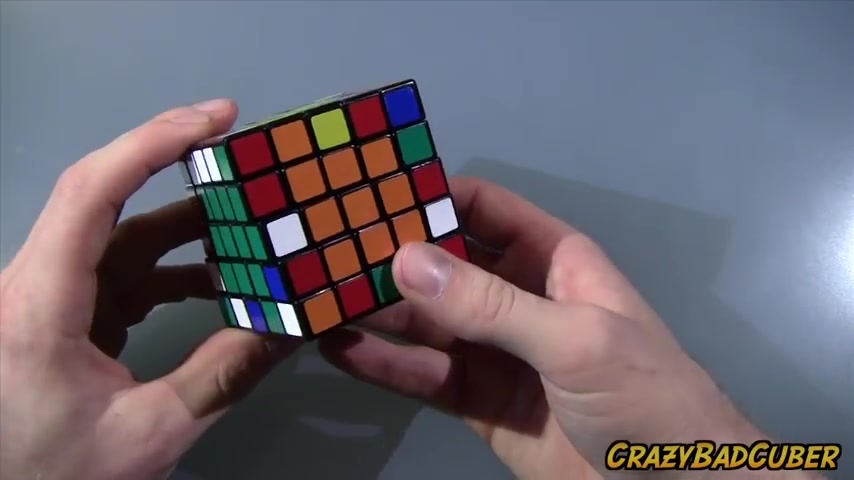
You can see that this front color is white and the front color of this is green .
So these are opposite colors .
So we know that when they are opposite colors , they will match up as you can see over here , this one does not match up and these are the same colors in the front .
So if you see that they are the same colors , you know that it is in wrong and this one actually belongs up here .
So let's go ahead and see how we match these up .
So what we're doing is slicing so we can slice this piece over and it temporarily takes out our centers and we need to be able to get those centers back .
So what we need to do is get this out of the way because if we were to just realign our centers , now we're gonna undo the work that we've already done .
So what we need to do is align these pieces and we need to get these out .
And the way that you can know if you're gonna bring in something that we can slice and not destroy is to be looking at this back edge .
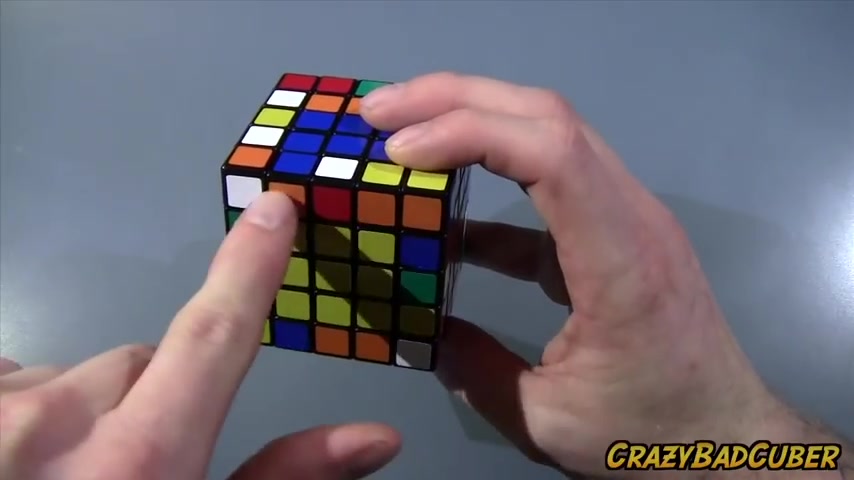
And the reason that is is because when we take this out , we replace it with this back edge , we put this edge here and we bring it down .
So every time you're gonna take out a pair that you've already made , you want to put the pair on the right side and you want to look at the top of the cube in the back and you wanna make sure that there is no pair there .
If there is a pair , I will demonstrate what to do with that when that time comes .
So the algorithm like I just showed you is to put the pair on the right and with your right hand , go rur prime , as you can see , it brought our batched pair up and it brought in an unsolved pair .
Now we can go ahead and move our centers back .
So let's take a look at another one .
Let's look at the red and the white .
So let's look for a red piece and a white piece .
I can go here or here slick around the cube .
Here is one here .
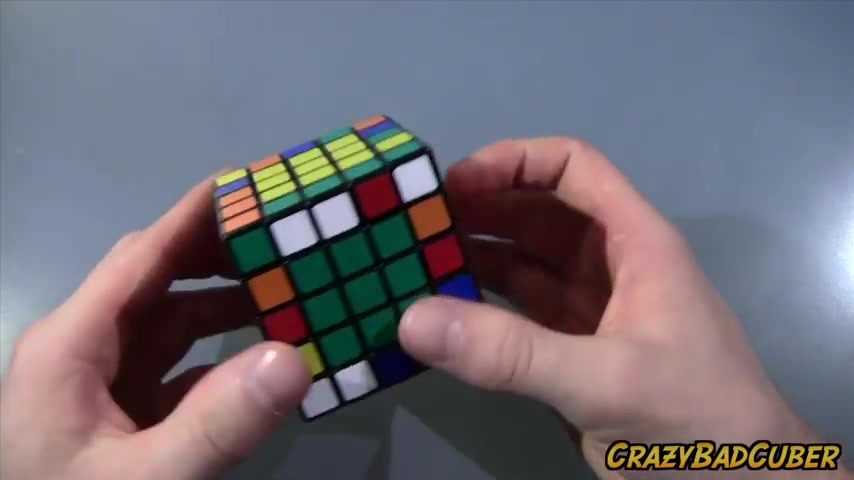
What I would like you to do is get this piece into the top layer and we know that this is in the front of us .
So this is the top layer and this is the bottom layer .
So let's get this piece into the top layer by just putting it in .
Now , what we wanna do is we want to put it so we can see them both on the same face .
So this whole thing , if we can see it on the top layer and here , then this is good .
Now , what we need is we need these to be opposites as you can see that this white is opposite of the red .
So this isn't con is in correct configuration , but we need this to be down here .
So we can slice it over .
But in doing that .
We've taken this one out .
So what , what can we do here ?
But what we can do is we can hide this piece by putting it down and then putting this over and then bringing this back .
And as you can see , there are now opposite colors and we can slice over to match them up .
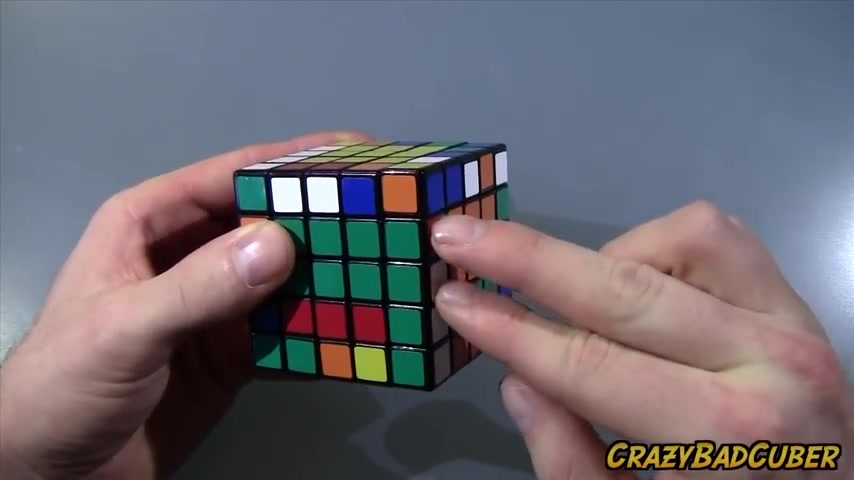
Now we wanna look back here and see , oh see there is a pair there .
Now it's you have to keep mindful because if we bring this up and bring this down just like this and we realign , you can see that we're gonna separate the work that we've already done .
However , if the pair that existed here was not in this position , but it was in this position , we would still be able to bring this pair in because they would be sitting here and not here .
So when we sliced back , we would not damage them , but we cannot use this pair .
So what we can do is we can use our finger and we can move until we have an unmatched pair back here .
Now , we can perform our rur prime and bring in an unmatched pair .
Now , we can realign our centers .
Let's take a look at another one .
Here's a blue and a yellow .
Let's take a look around the cube for a blue and a yellow pair .
Peace .
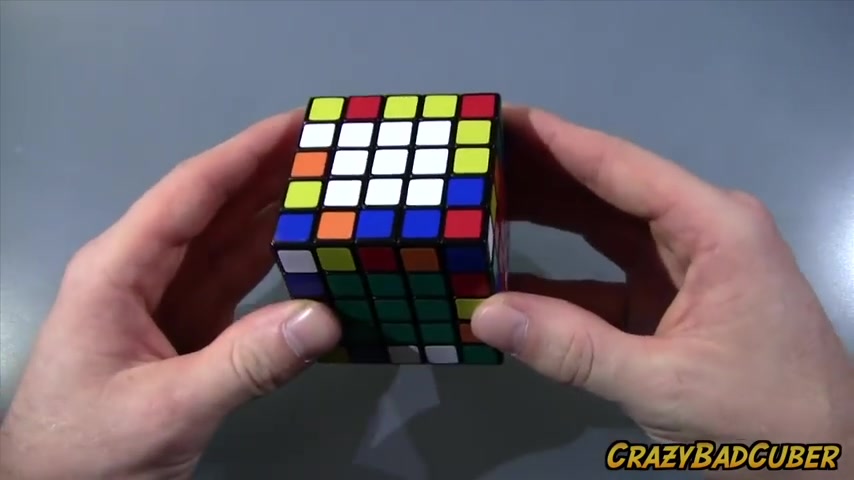
Sorry , there's none in this whole layer or the top layer .
So keeping my thumb on it So I don't lose my place .
I can turn the cube over and now I can look for one .
Again , here's one , a blue and a yellow .
So we need this piece to be over here because these are opposite pieces as you know .
So this is correct configuration and we can't just bring it over because again , we're gonna kick out the center and we won't be able to slice and align it .
So again , the same way , but on the other side , now we hide the center , then we can bring this over and then bring the center back and because these are opposite colors , we can now align them .
So let's align them .
And now putting this on the right , we take a look at the back and there is an , there is no matched pairs there .
So we are safe to use this .
So we go rur prime .
Now we have to realign our centers .
I think by now you're getting a little bit of a concept of how we do this .
So let's take a look at another one .
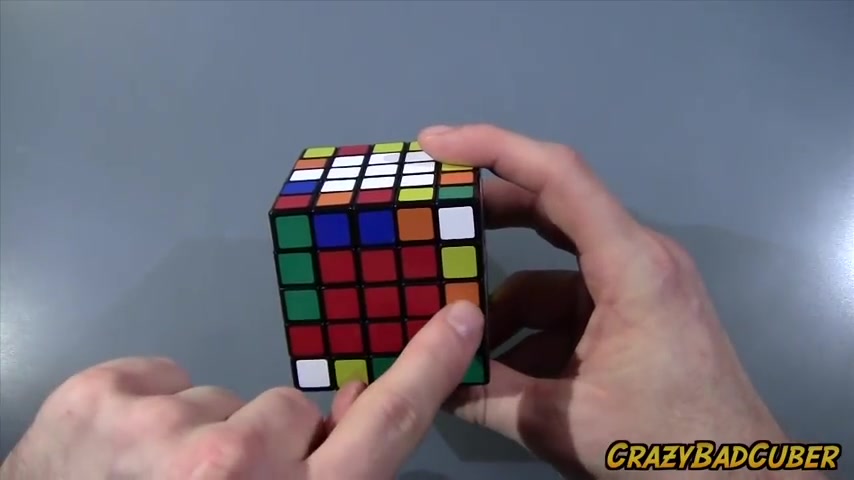
Here is orange and yellow .
Let's look for an orange and yellow piece that we can match up with it .
Here's one .
So let's move this into the same face as this .
And now you can see that this and this are the same color .
So this is an incorrect position .
We don't want that because if we move this , it would be the same and it would come in backwards .
So what we need to do is get the yellow over here .
And the way that we can do that is to move this into this layer by just doing an R move .
So as you can see it is now in this layer in the yellow and we can move it down .
Now this is in in correct configuration to slice over with the middle pair .
Now we're gonna use , put it on our right side and we're gonna use our Rur prime again to insert this up here and there is an unmatched pair here .
So we can use that Rur prime and now we can slice back .
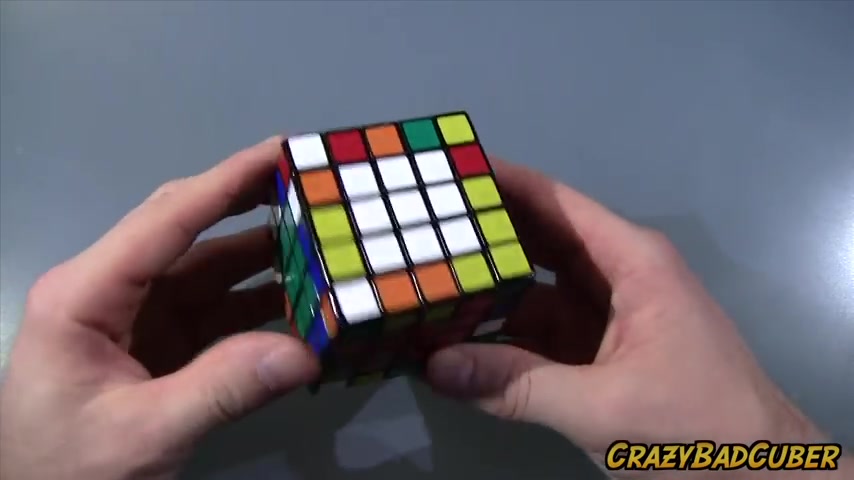
So I think by now you get an idea of how to do it .
So I'm gonna go ahead and I'm gonna complete the rest of mine until I have a matched pair in every one of these positions .
And I will see you when I'm done and please pause the video and come back when you are done .
All right .
So I'm done .
Hopefully , you have paused the video and completed that yourself .
So now we're going to take a look at um completing the third piece .
So let's take a look at this one .
Here .
We have a yellow and an orange .
Let's take a look for the yellow and orange piece that belongs there .
Here it is here actually right in front of me .
So here's the yellow and orange piece and we're gonna do this , the exact same way that we did the first two , but they're gonna run into a little bit more complications this time and I'm gonna explain how we get through those .
So , what we need to do is take a look .
These are in the same face , of course , and we're gonna treat this .
We're gonna look at this middle piece and that piece just the same we did to pair up these two .
So these are opposite colors which we know is good .
And of course , we can't just put this down because we're gonna kick that out .
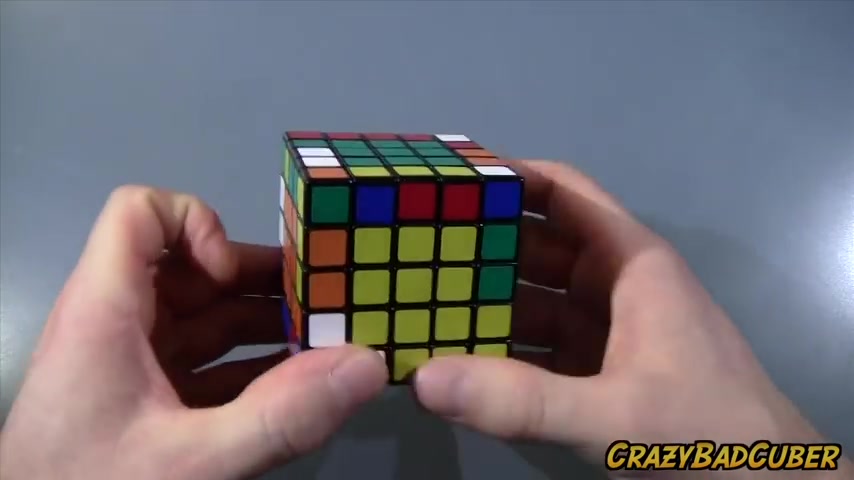
So we have to hide this piece , then we can put this down and then put this piece back .
Now , as you can see , we can slice over and we need to get this out .
So let's take a look over here because keep in mind as well that we are slicing through the bottom section .
So let's take a look back here and we will not be able to use this piece because as you can see when we bring this in , we brought in the pair and it happens to be here and it's not safe here .
It would be safe if it was here , but it's not .
So we have to put this back and we need the pair if we're slicing through the bottom on the right side to be on the left .
So if we're slicing to the bottom , the pair needs to be on the left in order for it to be safe .
So let's go through , we can't use that one either and we can use this one because it's on the left .
So let's take this out with our rur prime .
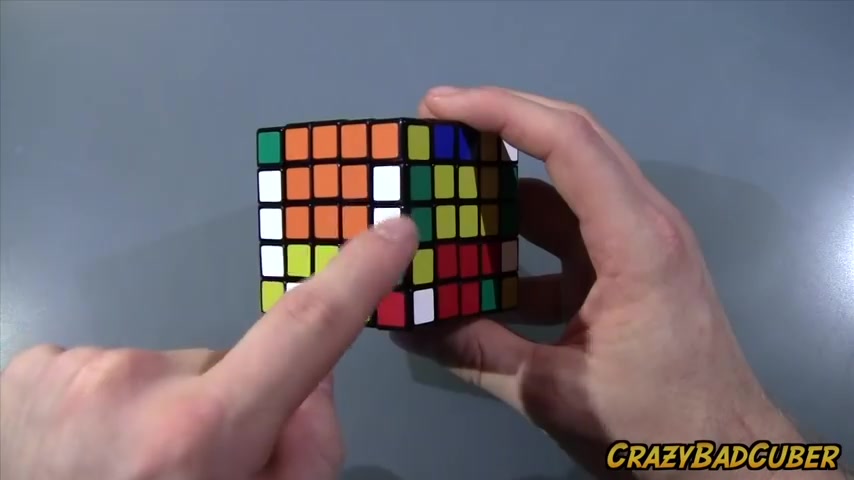
And as you can see when we realign our centers , we're not going to destroy the work that we've brought in .
So let's take a look for the piece for this one .
This is green and white .
Let's take a look around the cube and find the green and white piece here it is here .
So let's put this on the same face as this .
Now , we can see that these are in the same face and that this is the same color as that .
So this is not going to work if we bring it down .
So what we need to do is bring the white into this face .
So the face is here , this is the layer we're using .
So we bring it over .
So the white is in it and then we bring it down and now we can slice over to bring that in .
Now that we're slicing through the top side , we do need the pair to be in the right side .
As you can see , there's a pair on the left which will not work .
So let's try this again , that one will not work and this one will work because the pair is on the right .
So we do our move rur prime .
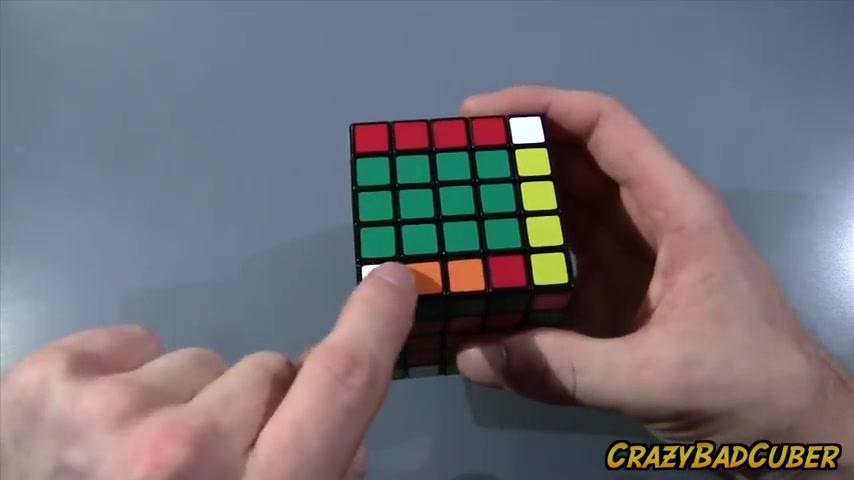
And now we can slice back without destroying oop , slice back this way without destroying this .
So let's take a look at this one .
This is red and green .
So let's take a look around the cube for the last red and green piece .
And here it is here .
So let's bring this into the same face as this just like this .
And as you can see , they are the same color .
So this will not work again .
We need the red side of this piece to be in this layer .
So let's put the red side in this layer and then bring it down .
Now , this can be freely sliced over to this and it will work now because um we're slicing to the bottom here , we need the pair to be in the left and look , we have a full pair here .
So we can't use this one as all at all .
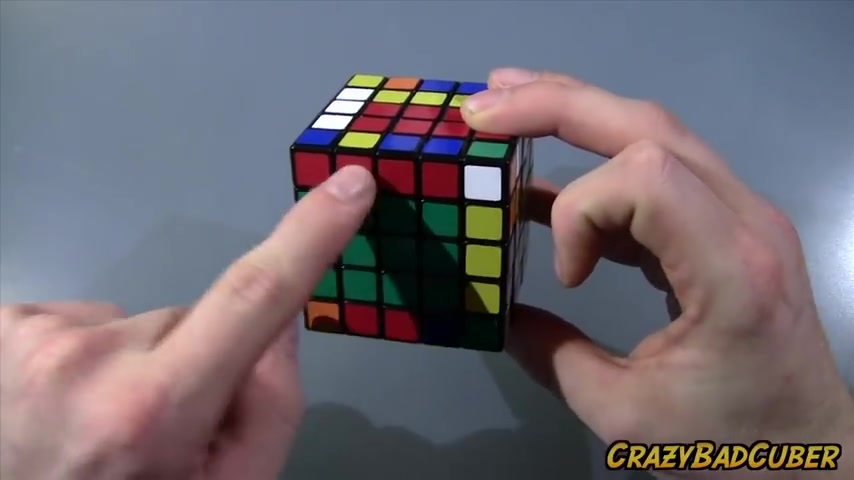
So let's put this over and we can't use this one , we can't use this one and we also can't use this one in this case , what I want you to do is I want you to turn the cube to the left .
So the , the piece that you're trying to get out is on the left .
And now I want you to look over here and we can't use that one and this one .
And because this is now on the left , every rule that we have here is opposite .
So if we're slicing through the bottom , we need one to be on the right for it to work .
And we're not gonna have to turn the cube very often .
But when we do , we have to keep that in mind that these have to be in the opposite position .
They were if they were on the right .
So now we can do the same move .
But with our left hand , we can do L prime U prime L .
As you see , we brought in this pair and we can realign our centers without destroying it .
So let's take a look at this pair .
This is yellow and red .
Let's take a look around for the yellow and red piece and here it is here .
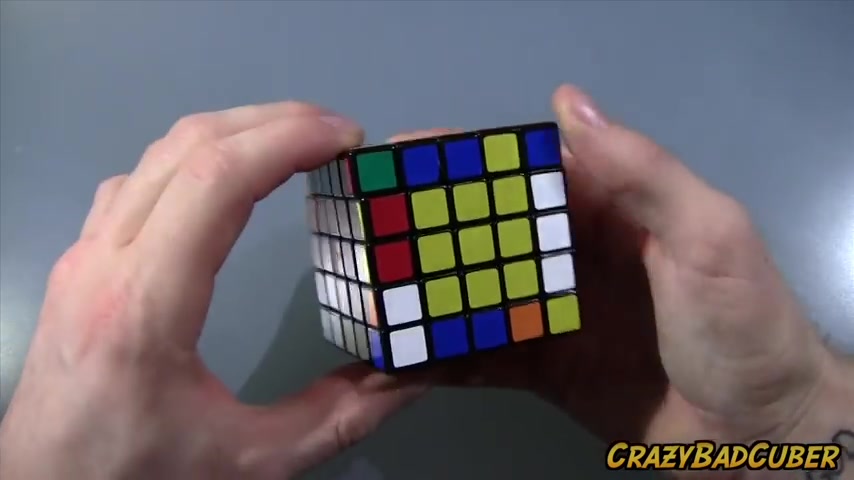
So we bring this onto the same face and you can see that these are opposite colors .
So this will work .
So we need to hide this piece and then bring this down and bring this piece back .
Now we can slice this over and match them up .
So putting it on the right , we need the matched pair to be on the left .
So let's go through , can't use that one .
It's totally fat .
Can't use that one .
You can't use that one and we can't use this one .
So again , we're gonna have to turn the cube to the left and because now we're slicing through the bottom and it's reversed , we need the pair to be on the right .
So we can't use that one we can't use that one , but we can use this one .
So we do it on the left this time L prime U prime L and now we just realign our centers .
So as you can see , we're getting closer and closer to having our edges finished .
Now we want to get this piece .
This is the blue and orange .
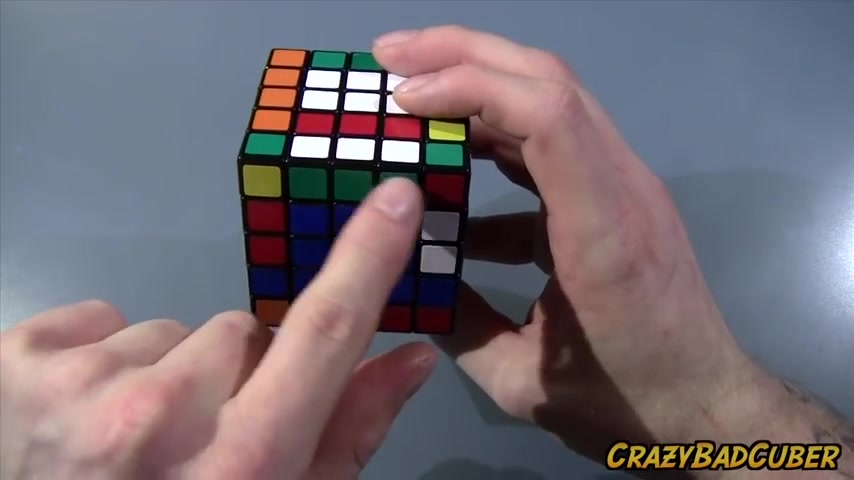
So let's look for the next blue and orange piece here it is here .
So let's bring it into the same face as you can see .
There are the same colors , which means this will not work .
We need the blue to be over here .
So we need this blue piece to be in this layer and bring it down .
Now we can slice over and align it .
We put this on the right side and because we're slicing to the top , we need the pair to be on the right and there's a full pair here so that one won't work .
And this one will , as you can see , the pair is on the right .
So we do our rur prime and now we can slice back without destroying our work .
Let's take a look at this one .
This is red and white here .
We have red and white .
So we put that in the same face and these are opposite colors .
So we know this will work .
So we hide the piece that we're using and put this in its layer and we bring this back .
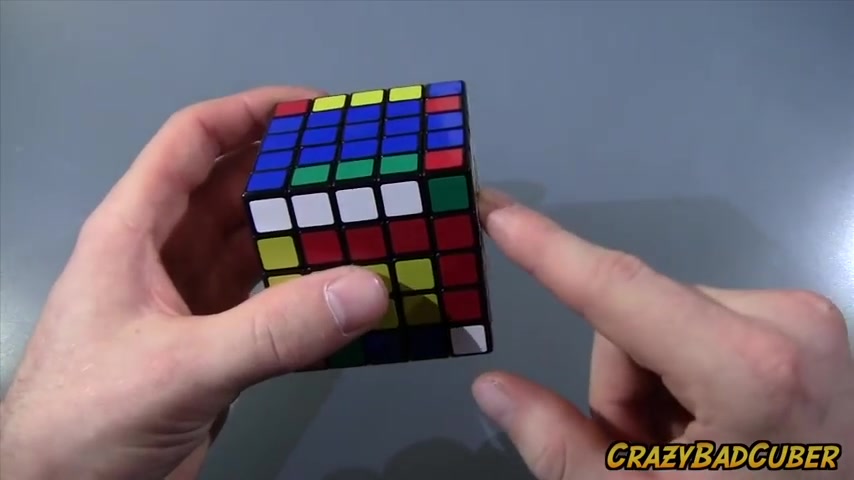
Now we can slice over now because we're slicing through the top .
We need our piece to be on the right our pair .
So we go up and now this is in the correct position because we will bring it in doing our usual rur prime and we can slice back without destroying our work .
So , let's see what we have left here .
We've got 1234 that are done and we've got 12 up here .
So we'll just keep going and see how far we can get .
So here we have one that's already done for us here .
We have the blue and white and we're trying to match up this blue and white here .
So let's match it up , put it on the right and then look for a piece in the top that we can do .
We can't use that one .
We can't use that one .
We can't use that one and we can't use that one .
So you're gonna find this is gonna happen because we are matching them , finishing them up now .
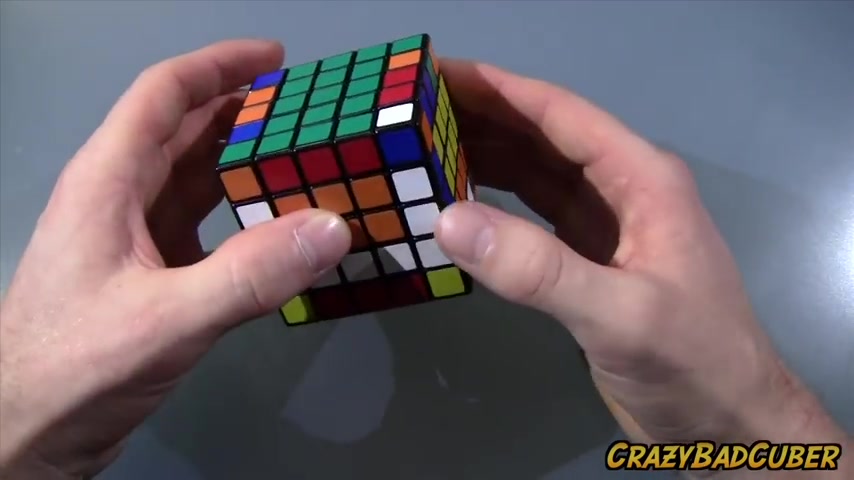
So in this case , only to turn the cube over , keeping your thumb on the pieces that you're trying to get rid of .
And I want you to keep them on the right .
And now we're going to try to see if we can find another pair up here that we can bring in to exchange it with .
And because we're slicing to the bottom , we need the piece the , the couple to be on the left .
So we can't use this one .
We can't use that one .
We can't use this one and we can't use that one .
So just like before when that happens , we turn the cube to the left and we take a look now because it goes backwards .
So now we need the piece , the uh match pa bringing in to be on the right .
So we can't use this one and we can use that one .
So we bring this left side up towards us and back down and now we can realign our centers .
So let's take a look at this one .
Here .
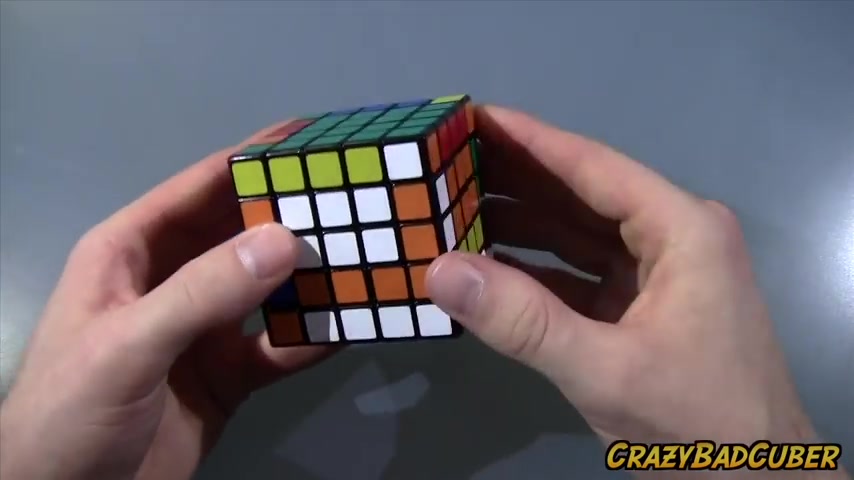
We have orange and white , here's the orange and white piece and we can slice it over and of course , still on this side , all of them are already used and cannot be broken up .
So we turn it over , keeping our thumb on it .
So uh we don't lose our place , keeping this tred .
We've just built on the right now because we're slicing to the bottom .
We need the match pair to be on the left .
So we can't use this one .
We can't use that one .
We can't use this one and we can't use that one .
So just like before we turn it to the left , as you can see , you're probably ahead of me now in thinking about what we're doing .
So now that we've turned it to the left , we need it to be backwards .
So we need the , the matched pieces to be on the right .
So we can't use this one and we can use this one .
So we bring this up , we bring that to exchange it with and back down .
Now we can realign our centers .
So now let's see what we have left .
We have two pieces left .
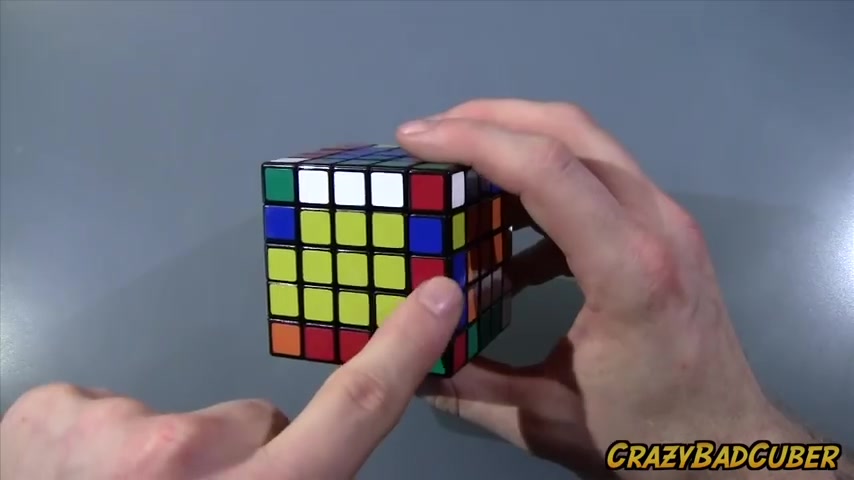
We have this one and this one .
So let's just bring them together .
And as you can see there is yellow and blue and the piece is here .
And then here underneath this piece , you have red and blue and it is here .
This is what we call a parity error .
And the reason it's an error is because even if we did match something up like this , we have nothing anywhere else to exchange it with .
So we have to use an algorithm and I'm going to teach you that algorithm .
Now , there's a certain way that I want you to hold the cube to make sure this algorithm goes correctly .
As you can see , we have them set up like this .
I want you to hold it .
So it's like this .
So these two pieces that need to be switched are on the right .
And our notation for this is this is gonna be our L moving these two layers , this is gonna be our R moving this two layers .
This is gonna be our U moving the one layer and this is going to be our F moving the one layer as well .
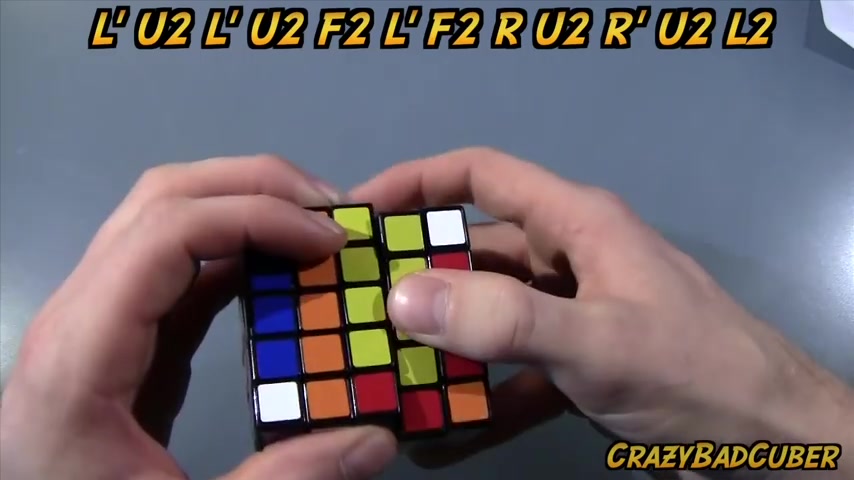
And the algorithm for this goes like this L prime U two L prime U two , F two L prime F two R , you too our prime , you too L two .
And as you can see that is fixed our parody error .
I will also have this algorithm in the description .
So you can go back to it any time you want .
So now that you've done that you've completed your edges , so now you can go ahead and solve it like a three by three by clicking on the three by three link on the home page .
And right now if you want , you can click anywhere on the page and be brought back to the home page .
Are you looking for a way to reach a wider audience and get more views on your videos?
Our innovative video to text transcribing service can help you do just that.
We provide accurate transcriptions of your videos along with visual content that will help you attract new viewers and keep them engaged. Plus, our data analytics and ad campaign tools can help you monetize your content and maximize your revenue.
Let's partner up and take your video content to the next level!
Contact us today to learn more.